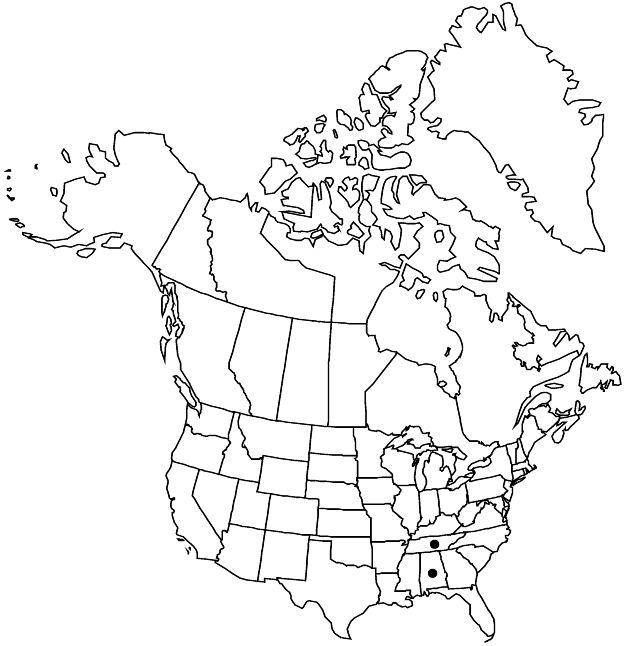Difference between revisions of "Crataegus harbisonii"
Bot. Gaz. 28: 413. 1899.
FNA>Volume Importer |
FNA>Volume Importer |
(No difference)
| |
Revision as of 20:34, 24 September 2019
Shrubs or trees, 50–80 dm. Stems: twigs: new growth sparsely pilose, 1-year old chestnut brown, becoming smooth; thorns on twigs frequent, 2-years old glossy, dark brown or nearly black, stout, 3–4 cm. Leaves: petiole length 15–20% blade, sparsely pilose, gland-dotted; blade shiny green, broadly elliptic to ovate, 4–7 cm, base cuneate, lobes 0 or 1–4 per side, sometimes apiculi, sinuses very shallow, margins doubly serrate, 5 teeth per cm, teeth 2 mm, gland-tipped early, veins 6 or 7 per side, apex acute, abaxial surface pubescent on veins mature, adaxial appressed-pubescent young. Inflorescences 5–12-flowered, arising subterminally from perennial short shoots, also frequently on leafy side shoots of season lateral to extension shoots; branches pilose; bracteoles semipersistent, ligulate, 7–18 mm, subherbaceous, margins glandular-pectinate to glandular-serrate. Flowers 20–25 mm diam.; hypanthium pubescent; sepals lanceolate, margins glandular-laciniate; stamens 20, anthers cream to light yellow; styles 3–5. Pomes orange-red to red, 12–22 mm diam., pubescent; sepals patent-reflexed; pyrenes 3–5. 2n = 68.
Phenology: Flowering early May; fruiting Sep–Nov.
Habitat: Wooded hills, creekside brush
Elevation: 0–200 m
Discussion
Of conservation concern.
Crataegus harbisonii is rare and is similar both to C. ashei and C. triflora and could perhaps be thought of as a particularly robust form of C. ashei; however, it is perhaps more likely of hybrid origin between these species. The most significant similarity to C. triflora (ser. Triflorae) is an ability to produce inflorescences on shoots of the season lateral to extension shoots. Nevertheless, it is easily distinguished from C. triflora by characteristics of growth habit, by its smaller flowers (except in the Louisiana and some Mississippi forms of C. triflora) with fewer stamens, by the more coriaceous leaves with larger and more distant teeth, by having among the most persistent bracteoles in the genus, a feature that led to the creation of ser. Bracteatae.
Selected References
None.
